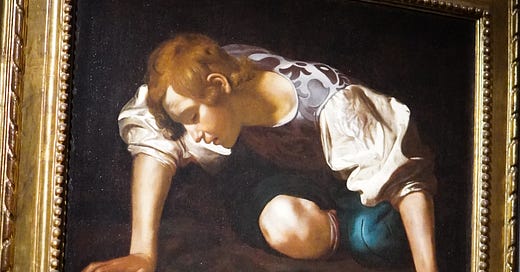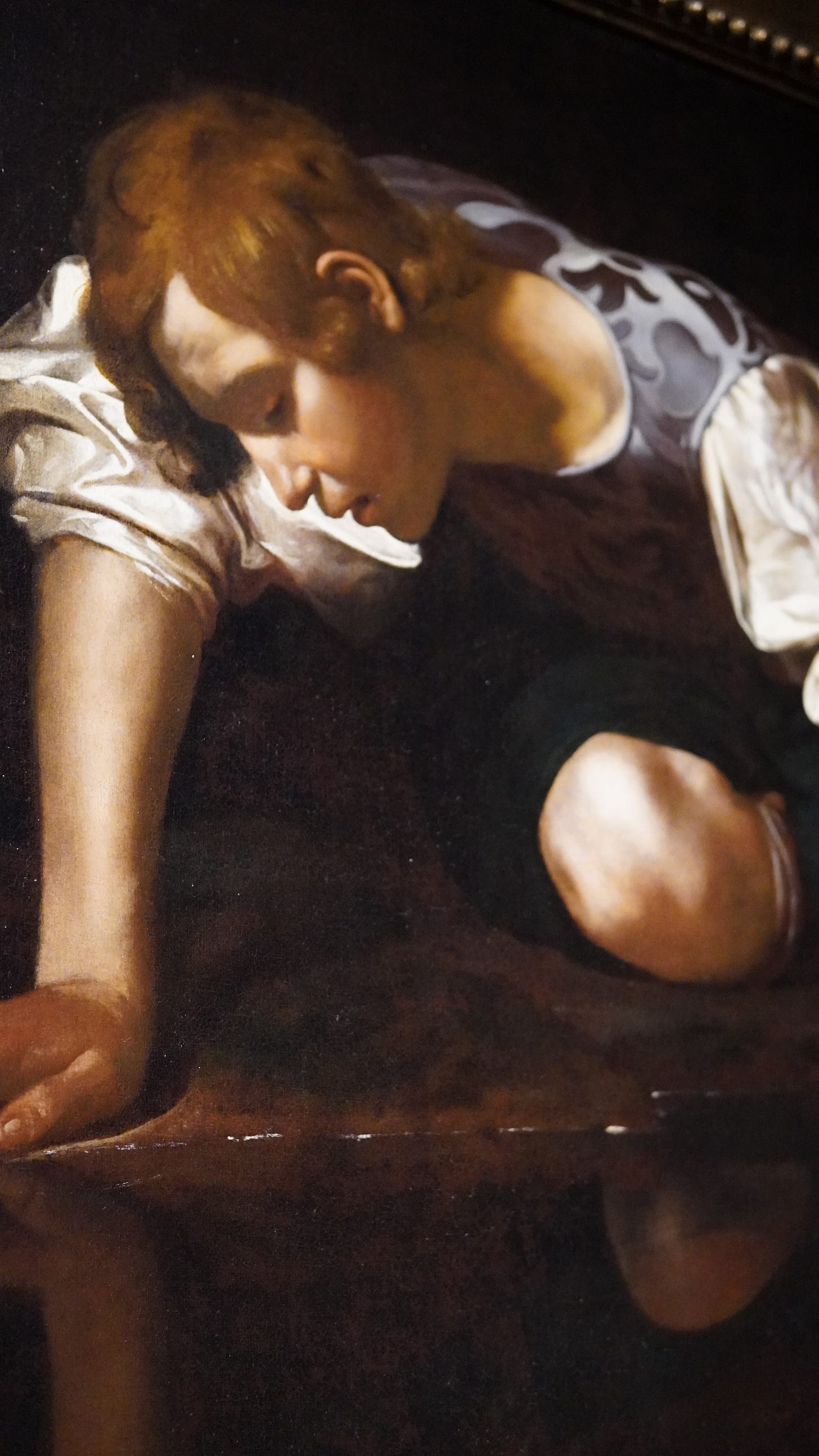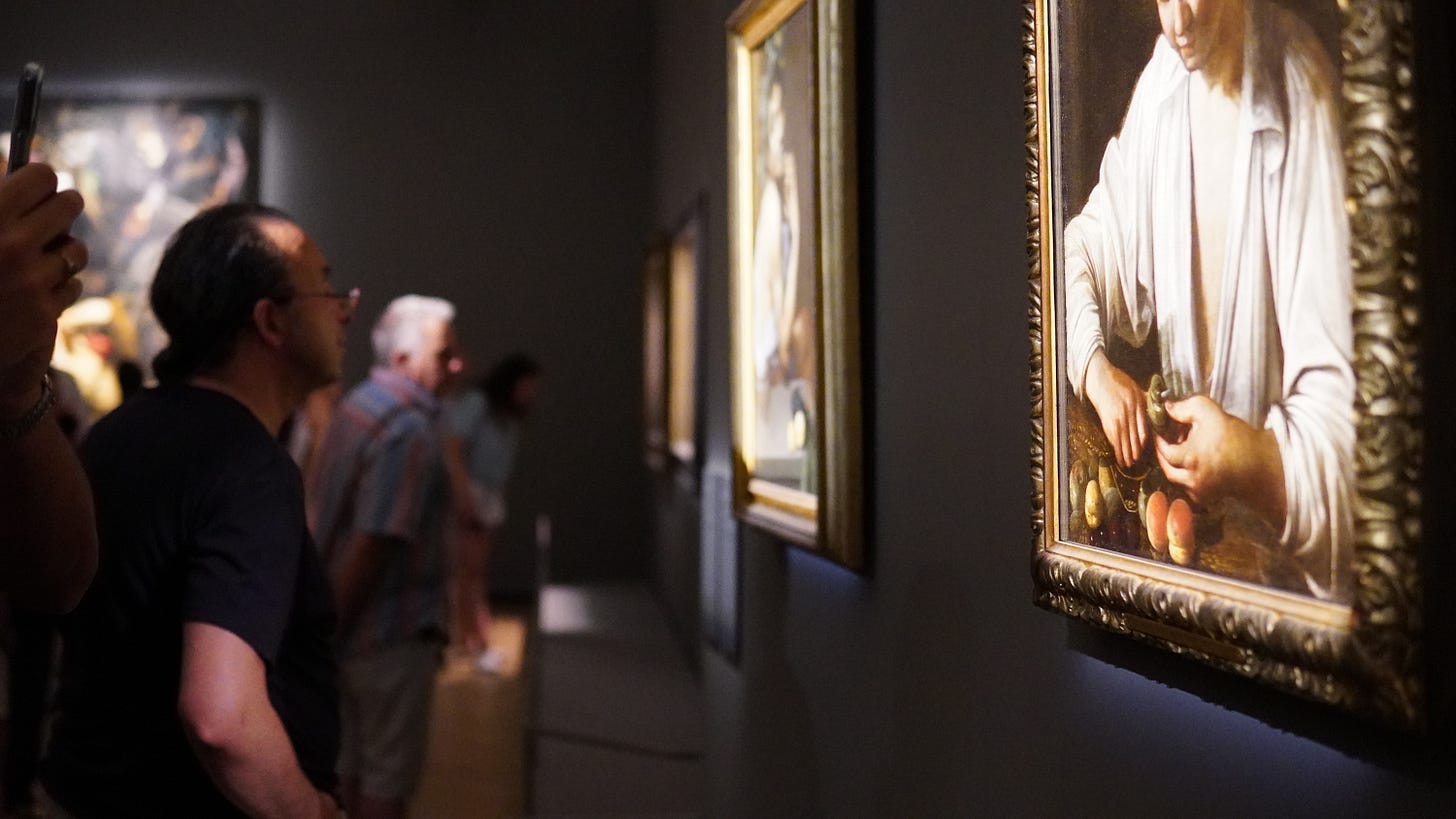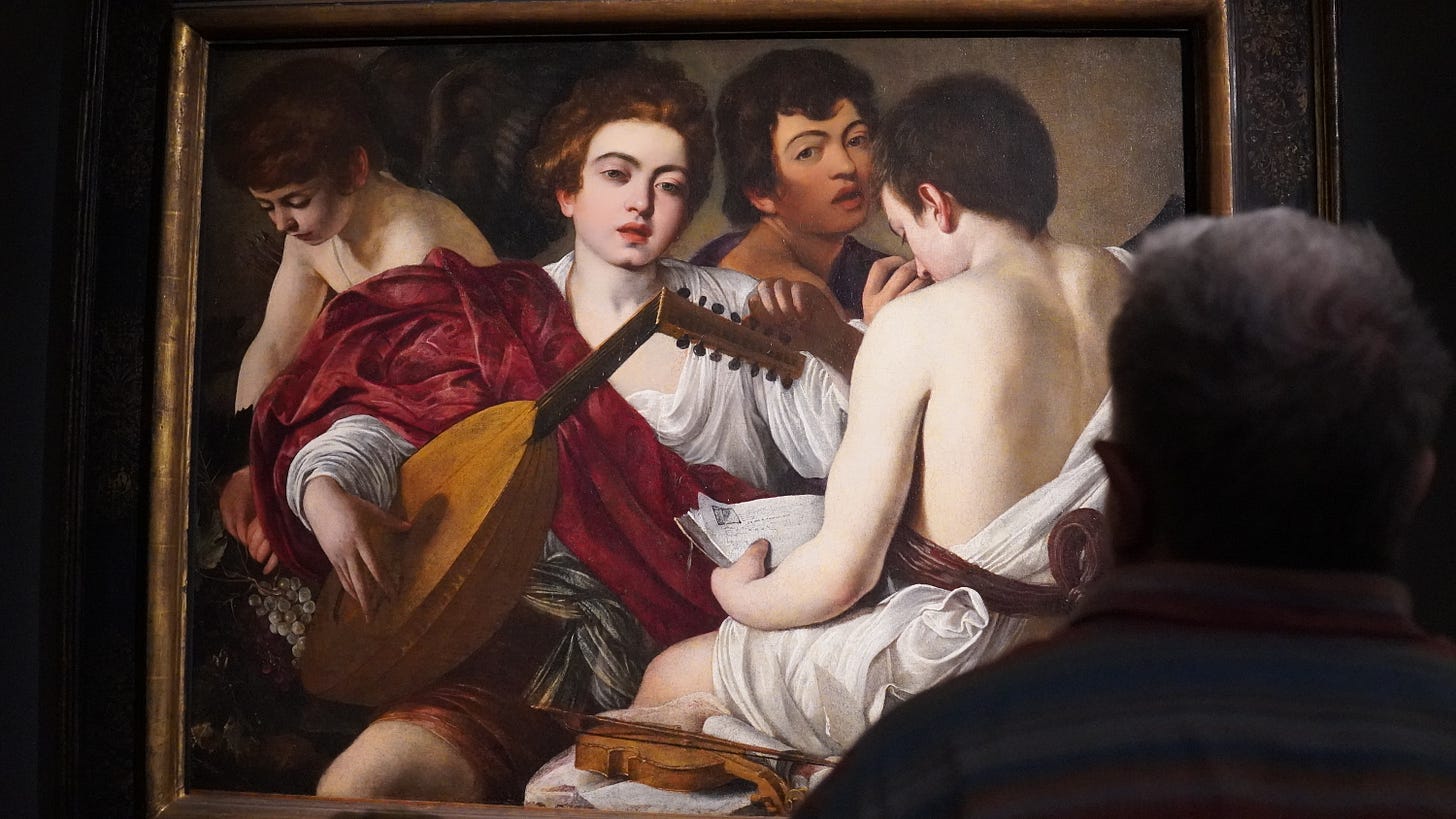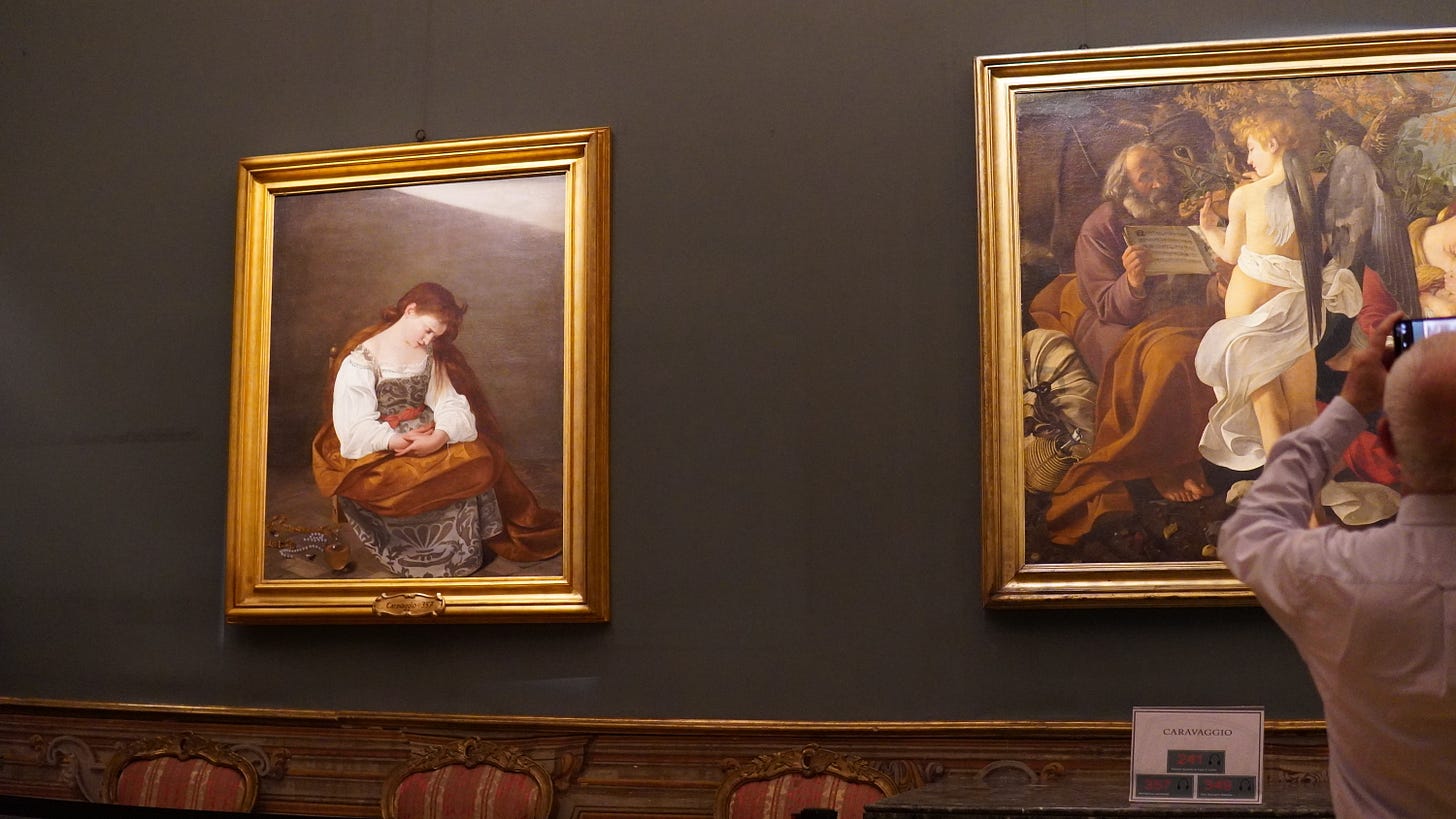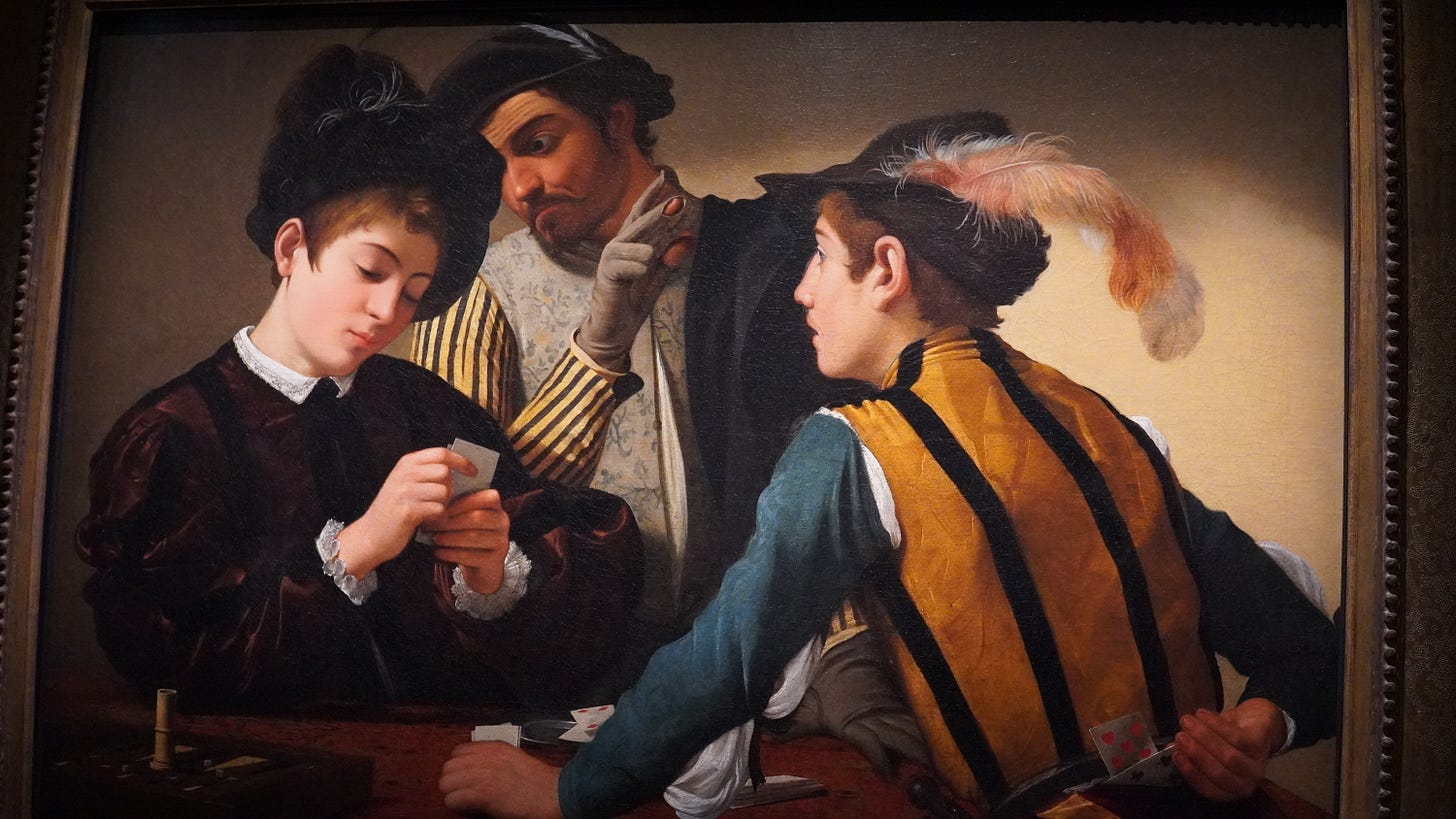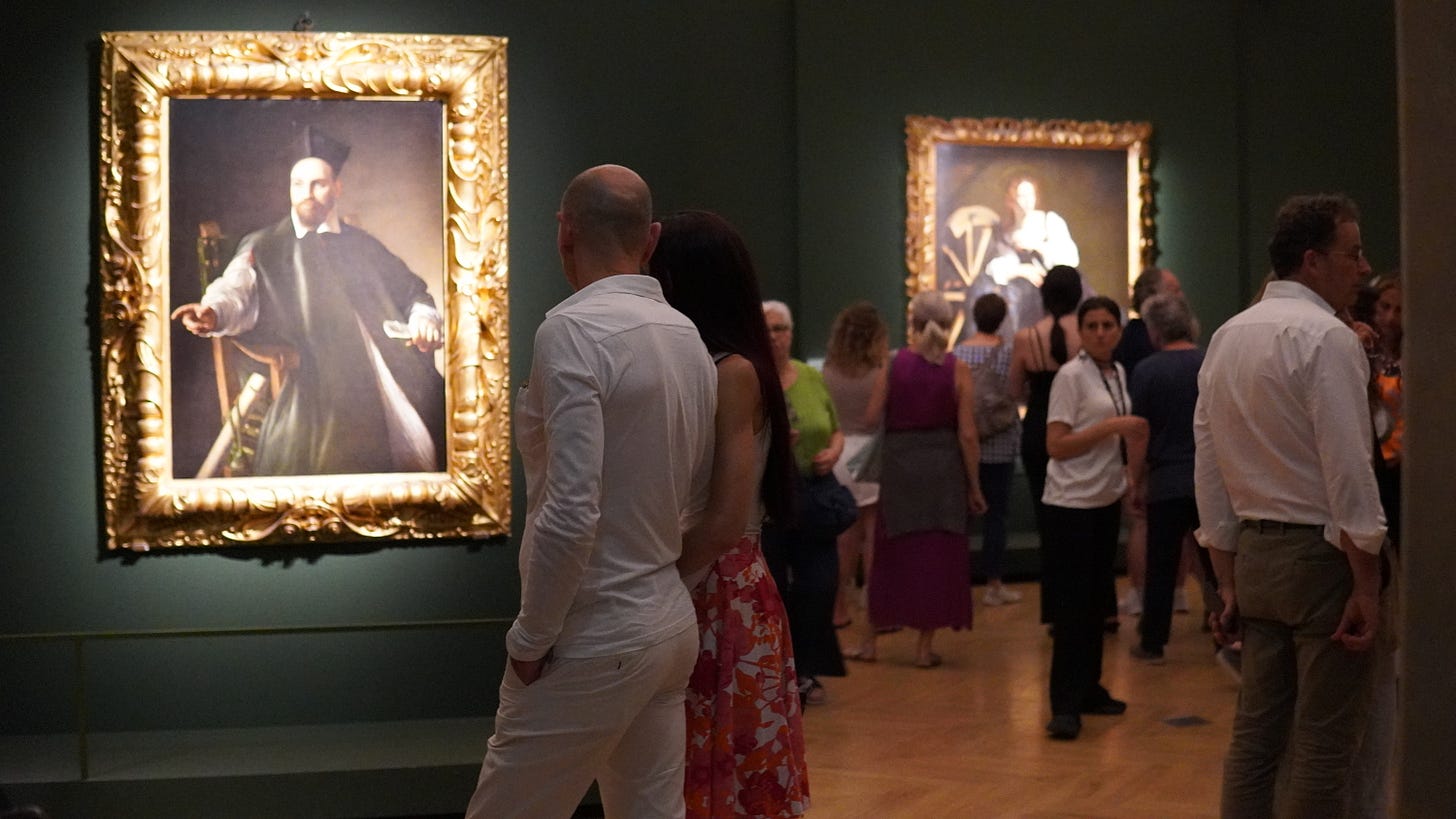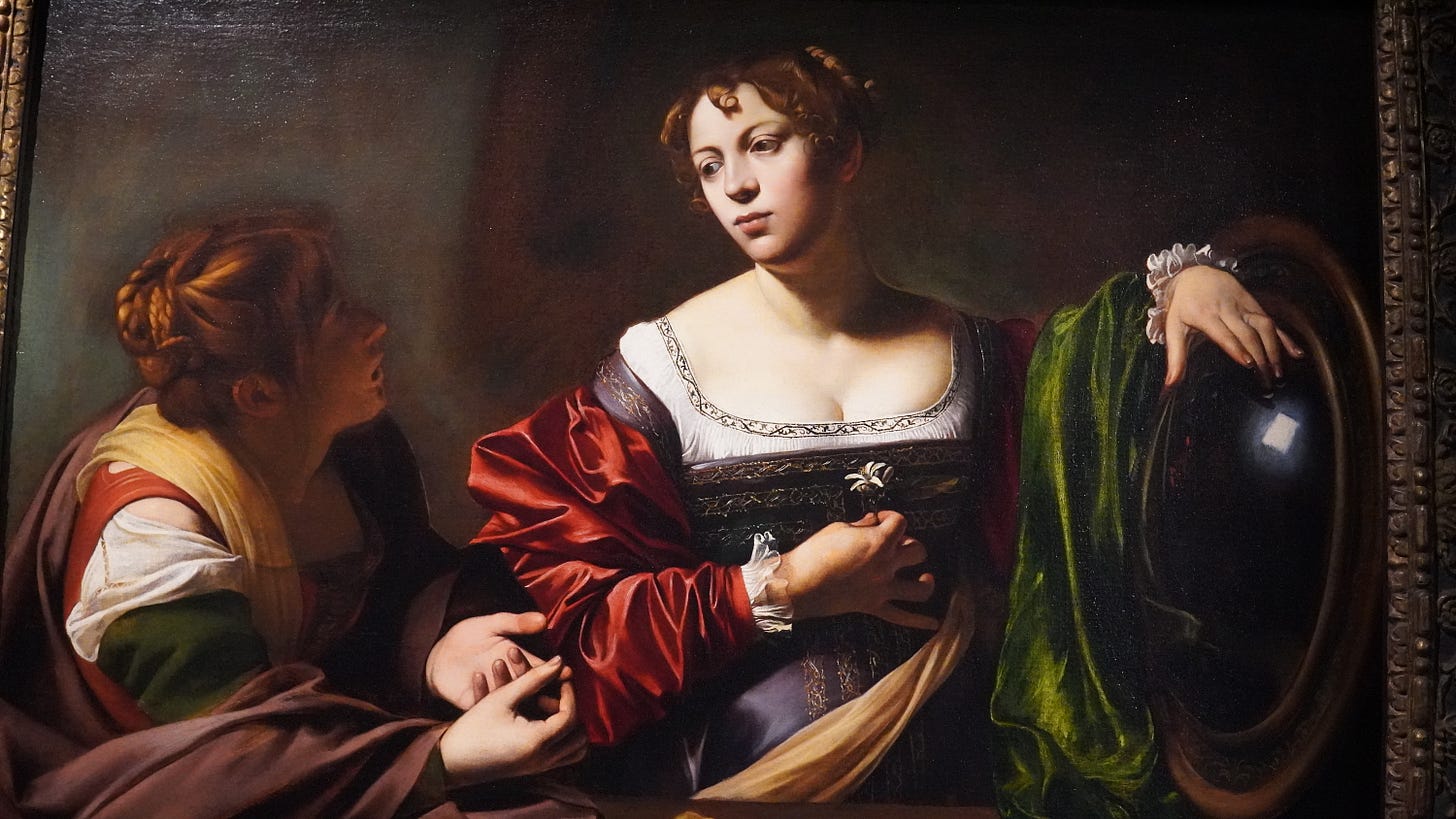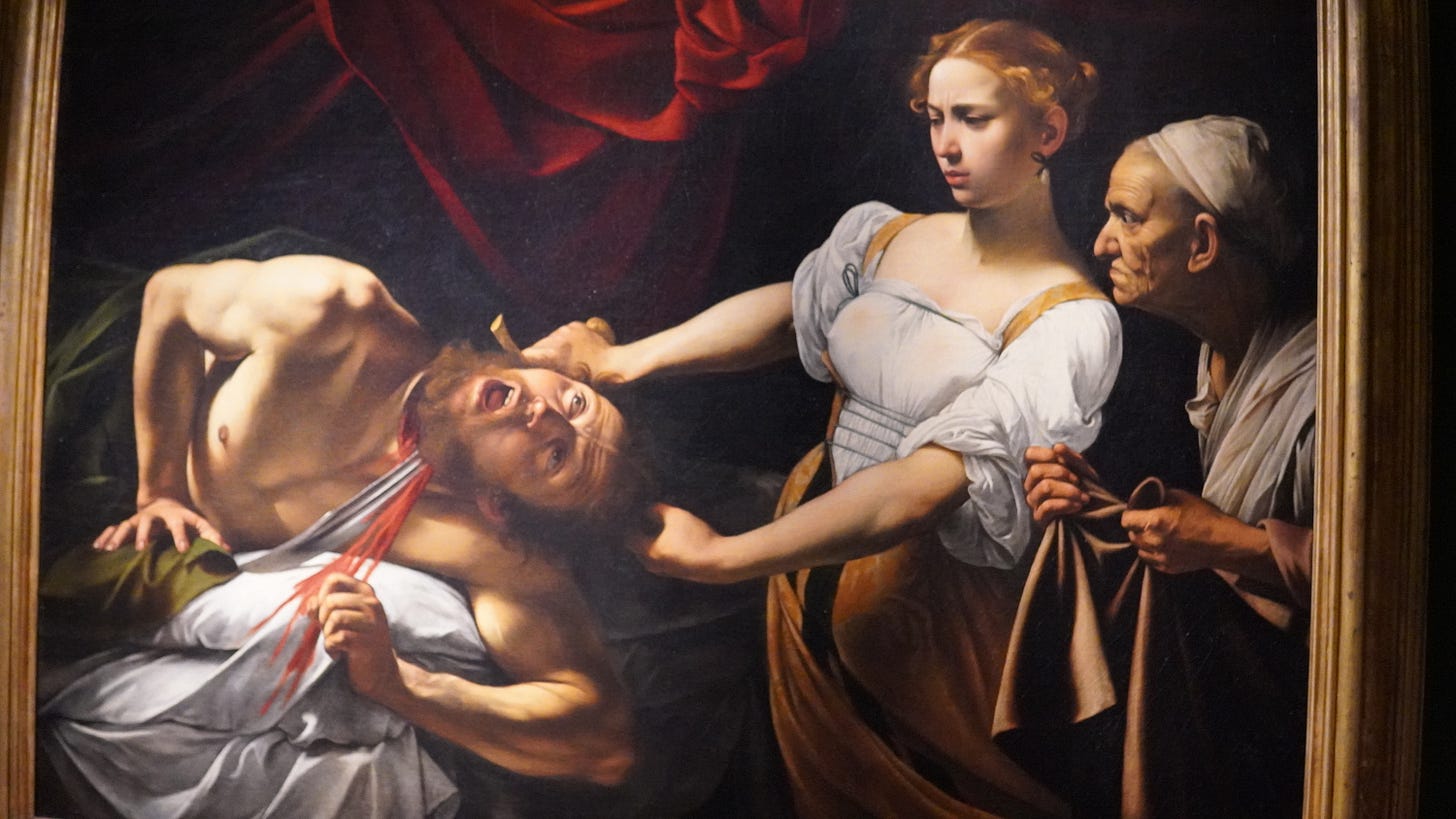Rome Day 2: What a Caravaggio Painting Taught Me About Taking Care of the Human Behind the Business
Maria Bella comes to my home each morning at 8am on the dot, to keep me honest with my workouts.
Mid-day is oppressively hot in Old Corfu Town.
After wandering the fish market, we retreated to the courtyard of my apartment to seek refuge.
My coach and I met, post retreat, to do a debrief. She said something I’m still thinking about:
”How are you taking care of Joya—the human—-
versus Joya, the business, the brand?”
This in the wake of me sharing that I was so tired that I found myself in the shower scrubbing my face with hair conditioner, instead of putting it in my hair.
See after hosting my retreat, I went to Rome for 36 hours with a client to see the Caravaggio exhibit.
I’ve become fascinated by this artist in the last year.
The Met in New York only has 4 of his works. Two of which are ever on display. So I went to Rome to gobble up as much of his work as I could.
Michelangelo Merisi da Caravaggio, as he was properly known, was a colorful character. Prone to brawling and even a murder charge. When commissioned by the Church to paint the Virgin Mary, he used a street prostitute as his model. He showed painted dirty feet on his subjects.
As you can imagine, this really pissed the Church off.
But no one could argue with his brilliance. He allowed white space to come through on canvas like no other. He created mood with black paint. He deftly showed tension between characters.
So even though the Church commissioned both Michelangelo and Caravaggio for work, people collected Caravaggio’s work privately.
Michelangelo’s work publicly.
That made this exhibit at the Palazzo Barberini significant because it was the first time someone went door to door to all the private collections in the world (including King Charles (once married to Princess Diana) and the Met in New York) to put all of the artist’s works in one place for the ticket-buying public to see.
Last Sunday, at 9pm, our ticketed entry time, I stood in front of Caravaggio’s Narcissus.
It’s one of his most psychologically rich and symbolically loaded works.
As the myth goes in Ovid’s Metamorphoses, Narcissus is a beautiful kid who falls in love with his own reflection in a pool of water. He becomes so enchanted by the image that he eventually withers away, unable to look away—even to eat or drink.
Caravaggio painted him alone, in the dark, bent over.
Paralyzed.
He doesn’t show us the pool or the world around him. Just one figure and his mirror.
But the water is an illusion. There is no water there.
And in that moment, something clicked for me.
I had just wrapped a 7-day retreat for my Mastermind in Corfu—a container where I held space for deeply personal storytelling, for deep bonding between members, for breakthroughs. I had navigated hosting different personalities. Fed everyone. Directed the energy. Anchored the room.
Then, without missing a beat, I was on a plane.
I hadn’t paused once.
My coach was now challenging me to get curious:
What are you afraid you will lose if you slow down?
What does leadership look like without performing constantly? What if you took two days to pause?
You hold space for others, but are you forgetting to hold it for yourself.
You are deftly reflecting others’ greatness but are you asking: What is mine?
If you’re a woman leading at a high level—maybe this feels familiar.
Could you consider stepping back from the reflection? Are you so caught up in the detail that you are missing the bigger picture? The human behind the business?
Could you be witnessed for who you are, not just for what you give.
When was the last time you got so focused on the doing that you forgot the being?
Other things I’m thinking about after the Caravaggio exhibit:
The painting on loan from the Met grabbed me immediately. My client had been wanting to go to the Met to see this piece. Lo and behold, here it was in Rome!
What role have I been playing lately that no longer fits?
I saw Mary Magdalene, weeping but composed—and realized I’ve been grieving rest without ever allowing myself to stop.
Where have I been smoothing the edges of my story instead of letting it be sharp?
Caravaggio lets silence speak in the shadows. Maybe I don’t need more words. Just more quiet time.
What does this art show me about how I’ve been using (or hiding from) my power?
What lesson did Caravaggio's work gift me that I can use on a stage?
How do I want to show up differently after standing in front of those paintings?
Whenever you’re ready, there are 3 ways I can help you:
1.Join the Samita Lab Mastermind. Join 7 other women leaders in giving a TEDx style talk on a NYC stage in front of 200 people at the end.
2. The Anatomy of a 'No' If you’re struggling to say ‘no’ gracefully at work, I created a digital community where all my scripts are organized (15,000 downloaded)
I’ll add to it each week.
3. Enroll in my workshop: “3 tips to supercharge your TEDx Application”
1600 already took it.


